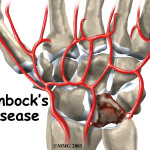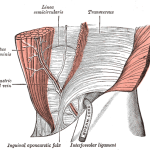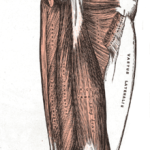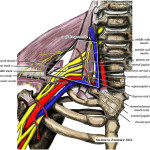Introduction
Cuboid Syndrome is defined as minor disruption or subluxation of the structural congruity of the calcaneocuboid portion of the mid-tarsal joint (Blakeslee and Morris, 1987). Now, that is quite a wordy definition which essential means the subluxation of the cuboid from its natural position. Whilst you may feel that this condition is rare, it is probably more common than you think, particularly in certain athletic populations.
Newell and Wood (1981) found that cuboid syndrome represents approximately 4% of all foot injuries. However, recently Jennings and Davies (2005) found that cuboid syndrome was present in approximately 7% of patients with plantar-flexion and inversion ankle sprains. 7%! Nearly 1 in 10 patients with the most common form of the most common sports injury – ankle sprain! Now we’re getting interesting. Furthermore, Marshall and Hamilton (1992) found that cuboid syndrome accounted for approximately 17% of foot and ankle injuries in ballet dancers. Now you’re taking note…
Therefore, for the sports physiotherapist who routinely treats foot and ankle injuries, cuboid syndrome is a condition that you must be aware of. It is frequently misdiagnosed and therefore poorly treated. If you do not look for this it is likely you won’t find it, and your athletes will suffer.
Aetiology
There are two proposed mechanisms of injury:
- Plantar-flexion and Inversion Injuries: Whilst there are a number of proposed theories, the one that I tend to prefer and feel fits clinically is the following. During rapid PF and Inversion (i.e. mechanism of lateral ankle sprain) there is a strong reflex contraction of the peroneus longus muscle. NB: For those in need of a quick anatomy lesson; the peroneus longus originates from the fibula and crosses the lateral surface of the cuboid before it inserts on the medial cuneiform and first metatarsal. During this forceful contraction the cuboid acts as a fulcrum, and the tendon then applies a force on the cuboid causing infero-medial displacement i.e. cuboid subluxation (Patterson, 2006).
- Overuse Syndrome: This is uncommonly described and rarely seen but it is suggested that subluxation of the cuboid occurs secondary to repeated microtrauma secondary to vigourous activities (Marshall and Hamilton, 1992).
Assessment
The following are the components of assessment that are indicative of cuboid syndrome: Subjectively the athlete with cuboid syndrome reports:
- A mechanism frequently in line with the proposed mechanisms above (although can occur insidiously
- Lateral foot pain (often directly over the cuboid, however can radiate along the fourth ray)
- Aggravated by WB (particularly lateral foot) and toe-walking
Objective Examination shows:
- Observation: sometimes inflammatory signs around cuboid. A dorsal sulcus may be evident with plantar subluxations. A palpable bump may be present for dorsal subluxations, which seems to occur more rarely (Mooney and Maffey-Ward 1992)
- Gait: pain with gait, particularly during toe-off.
- PROM: Passive inversion is often painful
- AROM/RIMT: Plantar-flexion and eversion often painful
- Passive Accessories: There is frequently a reduction in the amount of ‘joint play’ of the cuboid. However, joint mobility assessment is often unreliable. Reproduction of a patient’s pain is more reliable, and may also be reproduced by tarso-metarsal glides, mid-tarsal adduction and mid-tarsal supination
- Palpation: tenderness on palpation of the cuboid. There is also often spasm evident in the peroneal musculature.
Differential Diagnoses
You should consider, and effectively negate, the following differential diagnoses (Patterson, 2006):
- Peroneal Tendinopathy
- Peroneal Tendon Subluxation
- Sinus Tarsi Syndrome
- Jones #
- Anterior Calcaneal Process #
- Tarsal Coalition
- Lisfranc Injury
- Stress #
Imaging
X-Ray, CT and MRI are not helpful in diagnosis of cuboid syndrome, as it is challenging to pick up subtle variations in cuboid position. Imaging, however, can be useful in negating competing hypotheses during differential diagnosis (Patterson, 2006).
Treatment of Cuboid Syndrome
Cuboid syndrome respond very well to conservative physiotherapy management. The treatment regime, which is supported by the best available literature (Caselli and Pantelaras, 2004; Mooney and Maffey-Ward, 2004; Patterson, 2006), would include: Initial Treatment:
- Soft Tissue Releases to peroneal and long extensor muscles in spasm
- Heat and Electrotherapy (again aimed at muscle spasm)
- Cuboid mobilisation/manipulation (shown absolutely beautifully in the video below)
- Ice following manipulation
- Low Dye Taping, possibly with a midfoot support anchor or cuboid pad (to maintain reduction or return to play)
Subsequent Treatments:
- Long standing conditions may require additional mobilisation/manipulations (Jennings and Davies 2005).
- Exercise Therapy including peroneal and gastrocsoleus stretches, intrinsic/extrinsic foot strengthening, and neuromuscular/proprioceptive control exercises (Mooney and Maffey-Ward, 1994).
Return to Play Outcomes
Of the very limited research on cuboid syndrome (mostly small case studies) there is positive results. Marshall and Hamilton (1992) showed that it is possible to return to play (following manipulation and with supportive taping) within 24 hours of treatment. Now that is a quick fix!
A Word Of Warning
Just a quick word of warning for you budding cuboid syndrome fixers out there. Before you attempt to manipulate the cuboid you must ensure that your a confident and competent with the performance of the technique. If not, attempt mobilisation first or simply refer on. Trust me, your athlete will thank you.
Also, the research on this subject is significantly lacking. I just want you to be aware of this lack of high quality research if you decide to implement the assessment and management techniques discussed above.
What Are Your Thoughts?
What are your experiences with treating cuboid syndrome? Be sure to let me know in the comments or catch me on Facebook or Twitter. Are you a physiotherapist or physical therapist looking to promote your own clinic, check this out.
If you require any sports physiotherapy products be sure check out PhysioSupplies (AUS) or MedEx Supply (Worldwide)
References
Blakeslee, T.J. and Morris, J.L. (1987) Cuboid syndrome and the significance of midtarsal joint stability. Journal of the American Podiatry Medical Association 77(12), 638-642.
Caselli, M.A. and Pantelaras, N. (2004) How to treat cuboid syndrome in the athlete. Podiatry Today 17(10), 76-80.
Jennings, J. and Davies, G.J. (2005) Treatment of cuboid syndrome secondary to lateral ankle sprains: a case series. Journal of Orthopedic and Sports Physical Therapy 35(7), 409-415.
Marshall, P. and Hamilton, W.G. (1992) Cuboid subluxation in ballet dancers. American Journal of Sports Medicine 20(2), 169-175.
Mooney, M. and Maffey-Ward, L. (1994) Cuboid plantar and dorsal subluxations: assessment and treatment. Journal of Orthopedic and Sports Physical Therapy 20(4), 220-226.
Newell, S.G. and Woodle, A. (1981) Cuboid Syndrome. Physician and Sports Medicine 9, 71-76.
Patterson, SM. Cuboid Syndrome: A review of the literature. Journal of Sports Science and Medicine (2006) 5, 597-606
Related Posts











I have dealt with foot pain for 6 weeks. The last two were full of intense pain. My podiatrist said to rest and ice, but after six weeks of it I wasn’t getting better. I read some online articles about cuboid subluxation and was convinced this was my problem. A good friend of mine is a chiropractor and I sent him a text asking if he was familiar with the fix. He had me come to his office and I was fixed after being in his office for 15 minutes. 6 weeks of pain for an immediate fix. I was absolutely shocked that I was fixed so quickly.